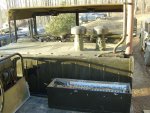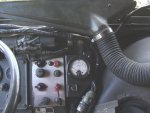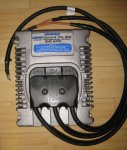To get back to the deep cycle question, a normal car battery is whats called a starting battery, they can provide high current flow for a short time such as engine startup, the problem with being able to deliver a high current flow is they can be damaged severely if you place a small load on them for a long time such as running a few lights until the battery dies. A deep cycle battery (also called a marine battery) allows a repetitive cycles of recharge, drain, recharge, drain, and so on without suffering much damage at all, but like the starting battery has a disadvantage the deep cycle battery has the opposite problem. They are not able to supply a high current flow for things like engine start.
Pretty much sums it up. The ideal system uses two sets of batteries, one for starting (vehicle comes with this, of course) and a second, which can be isolated from the starting batteries except for charging. The second set should be deep cycle type.
"Starting" type lead acid batteries will not take a full charge after only a few deep cycles, so even a battery equalizer is not a good solution here because it will run down the starting batteries also.
To verify the state of charge on the LA batts, you must use a hydrometer to see the actual condition, just reading the voltage is not reliable, it can show "full charge" with sulfated batteries.
My solution is to have a second set consisting of Nicads, which can be charged at a very high rate and don't mind thousands of deep cycles, as a matter of fact, they must be "flattened" (discharged to zero volts every so often).
I have installed such a system on my xm757 8x8 and it's isolated with a high amperage contactor, which I control with a toggle switch. Charging/discharging current is monitored on a 0-80 ammeter.
Edit: Added image







